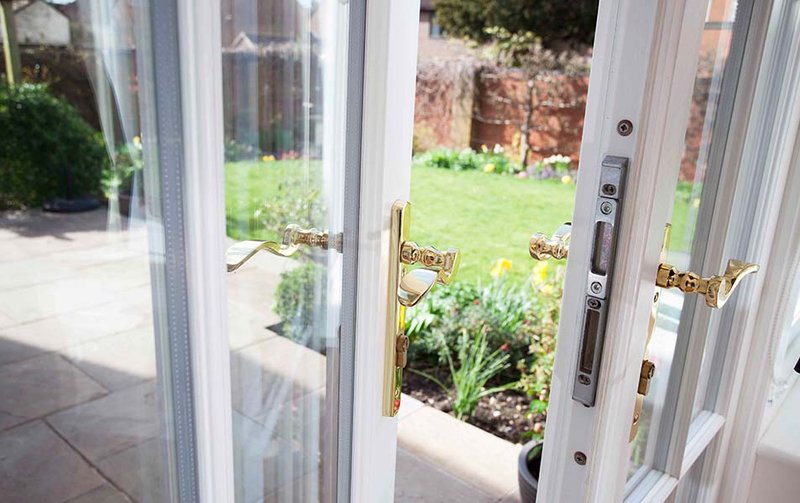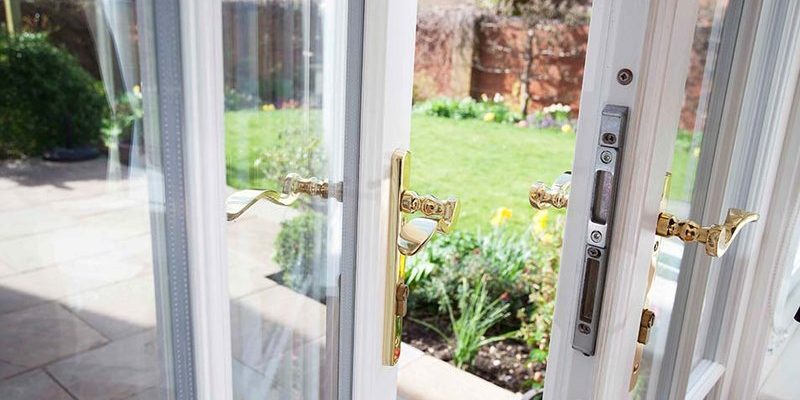
A latch that doesn’t engage correctly can stem from a few common issues. Perhaps the latch mechanism is jammed, or maybe it’s misaligned. Other times, it might simply need a little TLC—a good cleaning or lubrication. No matter the situation, understanding how to troubleshoot the problem can save you time and money. Whether you have a well-known brand like Pella or a more specialized model, getting to the root of the issue can help you get back to enjoying your lovely French doors.
Understanding How a French Door Latch Works
Before diving into troubleshooting, let’s take a moment to understand how the latch functions. A French door latch is typically a simple mechanical device that either engages or disengages to secure the door. Think of it as the door’s handshake with the frame. When you close the door, the latch slides into a corresponding strike plate on the door jam, ensuring the door stays shut. If everything is in sync, you’ll hear that satisfying *click*.
However, like any mechanism, this system can experience hiccups. Misalignment, debris buildup, or worn components can prevent the latch from engaging properly. Knowing how this mechanism operates gives you a solid foundation for understanding what could be going wrong.
Common Issues That Cause Latch Problems
Let’s get into the nitty-gritty. When your French door latch isn’t engaging, it can be caused by several common issues:
- Misalignment: Over time, doors can shift, causing the latch to miss the strike plate.
- Debris Buildup: Dust, dirt, and grime can accumulate, interfering with smooth operation.
- Worn Parts: Components might wear down due to regular use, making them less effective.
- Humidity and Temperature Changes: These can cause materials to expand or contract, affecting latch performance.
Identifying the specific issue is your first step to a solution. If your door isn’t aligning with the latch correctly, it might just need a little push back into place.
How to Check for Misalignment
Misalignment is one of the most common issues with French door latches. To check for this, first, close the door slowly and pay attention. Does it hit the frame before the latch fully engages? If so, you may need to adjust the door. Here’s how:
1. Inspect the Door: Look for gaps between the door and the frame. A gap could mean the door is sagging.
2. Check the Hinges: Are the hinges tight? Loose hinges can cause the door to drop. Tighten them if necessary.
3. Adjust the Strike Plate: If the latch is missing the strike plate, you can often adjust its position. Loosen the screws and gently reposition it, then tighten them back up.
Sometimes, realigning just the strike plate can make a world of difference.
Cleaning and Lubricating the Latch Mechanism
A simple cleaning can go a long way in fixing a stubborn latch. Dust and grime can build up inside the latch mechanism, preventing it from moving freely. Here’s how to clean and lubricate:
1. Remove the Latch: Use a screwdriver to take off the latch and strike plate. Be sure to keep track of small parts!
2. Clean the Mechanism: Wipe everything down with a damp cloth. Use a toothbrush for those hard-to-reach areas.
3. Lubricate: Apply a silicone-based lubricant to the moving parts. Avoid oil-based lubricants, as they can attract more dirt.
Once you have everything cleaned and lubricated, reassemble the latch and try it out. You might be surprised at how well it works after a little attention!
Inspecting for Worn Parts
If your latch still isn’t engaging properly after cleaning, it could be a sign of wear. Here’s how to inspect the components:
1. Look for Damage: Check for cracks or breaks in the latch or strike plate. Even small damage can lead to bigger problems.
2. Test the Mechanism: Manually operate the latch to see if it feels loose or unresponsive. If it doesn’t spring back easily, it might be time for a replacement.
3. Replace Parts as Needed: If you find that a part is worn out, you can often replace it without needing to replace the whole latch system. Just take the damaged part to a hardware store to find an exact match.
Sometimes, replacing a single component can solve the entire problem.
Dealing with Humidity and Temperature Effects
Did you know that humidity and temperature can affect your French door latch too? Wooden doors can expand with moisture and contract in dry conditions. Here’s what you can do:
1. Inspect Regularly: Especially during seasonal changes, check your door’s performance.
2. Use Weatherstripping: If the issue is primarily during winter or summer, add weatherstripping to help manage temperature effects.
3. Consider a Humidifier: In particularly humid areas, maintain a consistent indoor humidity level to prevent door swelling.
By monitoring these factors, you can reduce the impact on your latch and ensure smooth operation year-round.
When to Call a Professional
Sometimes, no matter what you try, the latch just won’t cooperate. If you’ve followed the troubleshooting steps and the latch is still not engaging, it might be time to call in a pro. Here are signs that indicate you should seek professional help:
- Persistent Problems: If the latch continues to malfunction despite your efforts.
- Severe Damage: Visible structural damage to the door or frame.
- Complex Mechanisms: If your doors have multiple locking mechanisms that require expertise.
A professional can diagnose and fix the problem more efficiently, saving you time and hassle.
Troubleshooting a French door latch that won’t engage properly can feel daunting at first. But with a bit of patience and a clear understanding of how the latch operates, you can often resolve the issue on your own. Whether you’re dealing with misalignment, debris, or humidity issues, taking a methodical approach can lead to a quick fix. If all else fails, don’t hesitate to reach out for professional help. After all, a secure door is a happy door!
By keeping your latch in prime condition, you can enjoy the beauty and functionality of your French doors for years to come. Happy troubleshooting!
